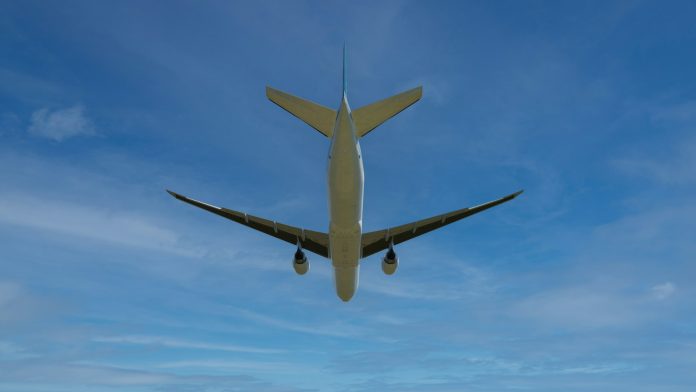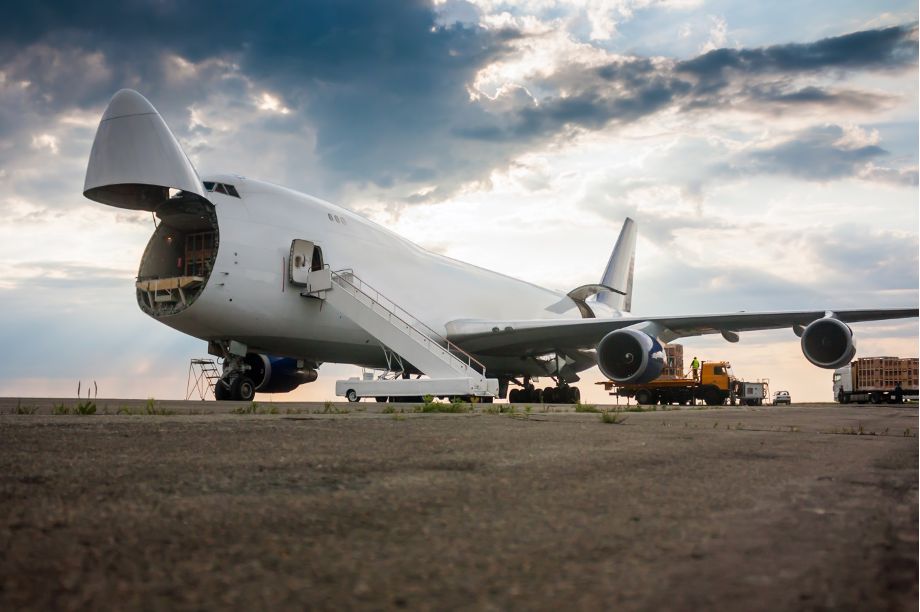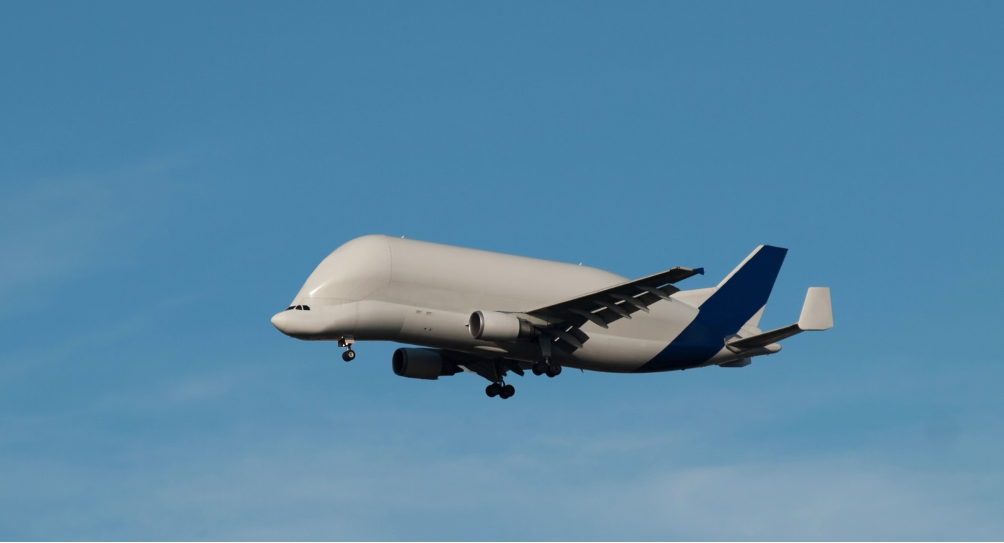What is air cargo and where/when did it start?
No matter where you might be in the US, the food on your plate, the components that make up your phone or laptop, the bed you sleep you in, or the very materials that go to make up the home you live in had to come from somewhere. While some may have been transported by road or sea, many more have found their way to your home or office thanks to the different types of cargo aircraft used to transport them by air.
Cargo air charter, an industry that has become the multi-billion-dollar hub of international commerce, originated from humble beginnings right here in the United States. In November, 1910, a US department store shipped a 200 pound consignment of silk from Dayton to Columbus Ohio, a distance of 65 miles. A Model B aircraft – designed by the Wright Brothers – raced against, and beat an express train in a competition that would demonstrate the viability and the future of air freight as a force for the future.
By the end of the 1920s, companies like Ford and the U.S. Post Office had already implemented the use of air freight as a major component of their business models, a trend which quickly followed suit around the world.
Despite the popularity of air cargo as a means of moving goods easily around the US, it wasn’t until the end of World War II that the International Air Transport Association (IATA) was founded. At around the same time, coinciding with the arrival of the Boeing 747, (which could carry over 100 tons of assorted freight) all-cargo airlines began their rise in popularity.
An industry that began with the use of private aircraft soon evolved from small cargo planes to specialist cargo carriers, and eventually to entire fleets of cargo freighters, which serve as the workhorse delivery channels for the world we know today.
Passenger flights and air cargo
Without the ability to carry cargo, many passenger airlines would struggle to stay in business. During the rise of the COVID-19 pandemic, the number of US passenger flights declined dramatically. This decline meant that airlines had to reutilize passenger aircraft as cargo freighters, even carrying cargo in the passenger sections of their aircraft. Others have opted to repurpose their idle aircraft through conversions from passenger to cargo carriers. These conversions have helped to stave off the collapse of many airlines.
Before COVID the most evident difference between cargo and passenger aircraft is that the belly of passenger aircraft can be used to transport additional cargo and in doing so add to the route’s commercial viability. About half of all US air freight travels as cargo on scheduled passenger flights.
The types of cargo transported via commercial aircraft are usually fresh, time-sensitive produce, mail, urgent deliveries for supply chains, non-toxic and non-hazardous materials, along with a whole range of goods not requiring specialist cargo conditions. Cargo sent by passenger flight ‘belly’ freight are grouped and loaded in Unit Load Containers (ULC), which fit snuggly in the storage bay beneath the passenger section of the aircraft.
Different types of cargo aircraft
There are more than 60 major cargo shipping companies across the US, who specialize in every aspect of the transportation of goods both nationally and internationally. These specialist air cargo companies come in a variety of sizes, from operators using small fleets of aircraft and brokers who can arrange to charter any size or number of aircraft, to the giants of the industry, who employ large fleets of specialist cargo aircraft.
While many US airlines continue to use their repurposed passenger aircraft to carry cargo – other companies, some with giant cargo fleets of over 700 aircraft, invest heavily in planes such as the Boeing 777 with the capacity to transport up to 102 metric tons of cargo.
The type of cargo aircraft used to transport any cargo across the US is determined by several factor – the size of cargo, destination, distance, weight, are the materials hazardous, do they require special shipping conditions (live animals, temperature-sensitive vaccines, etc.), and a host of other factors. However, the most common requirements and cargo aircraft specifications in the US can be matched using one of the following aircraft solutions.
Wide-Body Freighters: These aircraft can handle containerized and palletized cargo on both upper and belly decks. The side doors have usually been modified to allow for easier loading and unloading of large loads via rail and track systems. Wide-body freighters usually operate from major US airports with longer runways in metropolitan settings. Wide-body cargo freighters are well equipped to handle time-sensitive, and oversized cargo and are much in demand for their range, trip cost, and their cargo volume capacity. Wide-body freighters are key in the export of US goods worldwide.
The 4 most popular wide-body freighter models: in the US Boeing’s 777-200ERF, 747-8F, 767-300ERF. (Source: https://aeroreport.de/en/aviation/widebody-cargo-aircraft)
Narrow-Body Freighters: The narrow-body is filling a much-needed gap in cargo transportation. Just like the wide-body freighters, narrow-body freighters can also handle containerized and palletized cargo, but on the upper decks only. While still requiring long runways, they are particularly important across the US domestic routes and are best suited to serving smaller city airports. They are especially important for the movement of time-sensitive goods such as fresh produce and seafood, mail consignments, documents, and pharmaceuticals.
The most popular narrow-body freighters at present: Boeing 737, Boeing 757, Boeing 727.
Feeder Aircraft: Many large US freight carrier fleets make use of short-haul feeder-aircraft to support moving cargo from small and medium-sized markets to the larger more central cargo hubs. Feeder aircraft are usually piston and turboprop aircraft, which can operate from regional airfields without the need for long runways. In a country the size of the US, feeder aircraft open up the more rural, and less serviced regions for connectivity with larger and more centralized hubs. They are the ideal cargo solution for mail deliveries, e-commerce, and servicing rural communities due to their short range and small capacity.
4 common types of feeder aircraft: ATR72, ATR42, Cessna 208B Super Cargomaster, and Dornier 228. Maybe show one of these feeder aircraft to show the range of sizes
The cargo supercarriers
As not every type of cargo can be accommodated on wide-body, narrow-body, or feeder aircraft, the industry also needs some very specialized and unusual cargo carriers to tackle super heavy loads, hazardous materials, and other unique cargo requirements. While the shapes and designs of the unusual aircraft tasked with handling unique cargo may look different from what we’ve come to expect from aircraft design, these super machines are the real Trojans of air cargo transport.
Antonov AN225 – Designed to carry more than twice the cargo of a Boeing 747 freighter and with the dimensions of an average American Football field, Ukraine’s Antonov AN225 is the ultimate example of heavy lifting power at its most awesome. This six-engine super aircraft was initially designed to transport Russia’s space shuttle and was designed to carry a payload of 250 tons. While the space project never fully got off the ground, the AN225 found much demand for its outsized cargo capacity transporting up 200 tons of turbines, generators, and giant trucks for the mining industry. This mega-aircraft can also accommodate 16 ten-ton aviation containers or 50 family-sized cars.
Airbus BelugaXL – The Airbus BelugaXL is a giant transport aircraft designed and built by Airbus as a replacement for the original Airbus Beluga to transport non-standard sized aircraft parts such as wings and fuselages from suppliers around Europe. It has also been used in the transport of highly specialized cargo including delicate artworks, industrial machinery, entire helicopters, and sensitive equipment for use on the International Space Station. It has a maximum payload of 47 tons.
Boeing 747 LCF – Also known as the Boeing Dreamlifter, the Boeing 747LCF (Large Cargo Freighter) is predominantly used for the transportation of large Boeing aircraft parts to the central assembly line from global suppliers. Before the arrival of the 747LCF, the wings for the Boeing Dreamliner were manufactured in Japan and transported by sea, taking up to a month to arrive at the final destination. After the introduction of the Boeing Dreamlifter, the transportation time was cut to a mere 9 hours.
The importance of cargo aircraft
More than any other factor, the rise of e-commerce has increased the importance of cargo aircraft. With the upsurge in online shopping –the rise in demand for cargo space outstripped the availability due to the loss of additional passenger aircraft belly space.
Cargo transport has become a significant income generator for airline companies as some aircraft such as the Boeing 777-300ER can carry over 20 metric tons in their hold. It is estimated that 50% or more of international passenger flights are profitable only because of the cargo they carry on their trips.
Some of the most popular cargo aircraft in use in the UK and Europe:
| Type | Maximum size in cubic meters | Range | Maximum weight for sale in tons | Sizes of shipping stores for aircraft LxWxH cm | Size doors for freight WxH cm |
| Antonov AN124 | 1091 | 4,500 km | 180 | 3650x430x640 | 640×440 |
| Boeing 747-400F | 755 | 8,230 km | 124 | 4900x488x300 | 340×305 |
| Boeing 777F | 625 | 9,000 km | 100 | 4400x488x300 | 372×305 |
| Airbus A330F | 469 | 7,400 km | 65 | 4500x526x564 | 358×256 |
| Boeing 767F | 400 | 6,000 km | 55 | 3000x400x250 | 340×240 |
| Douglas DC10 | 400 | 3,200 km | 65 | 3725x448x245 | 350×255 |
| Boeing 757F | 187 | 6,300 km | 33 | 3600x317x195 | 340×218 |
| Boeing 727F | 144 | 2,570 km | 24 | 2712x351x213 | 355×224 |





 Bitcoin
Bitcoin  Ethereum
Ethereum  Tether
Tether  XRP
XRP  Solana
Solana  USDC
USDC  TRON
TRON  Cardano
Cardano  Lido Staked Ether
Lido Staked Ether  Avalanche
Avalanche  Toncoin
Toncoin